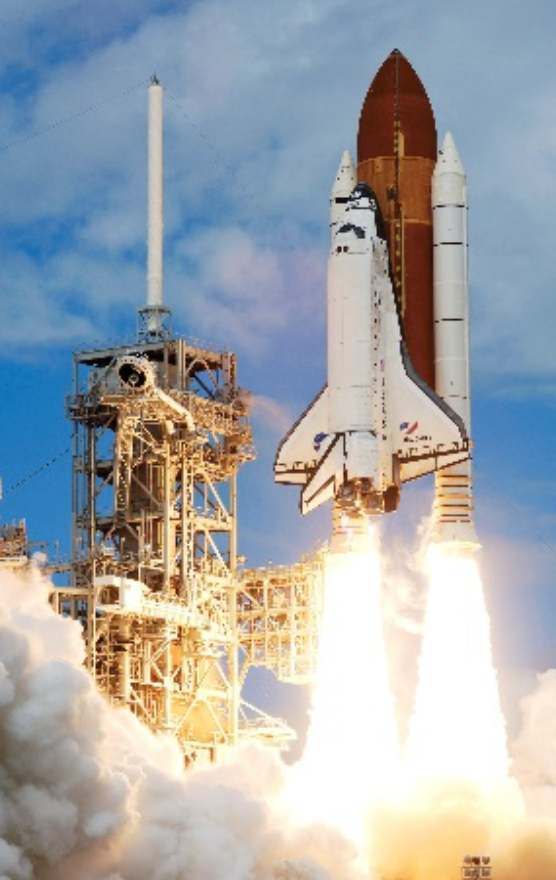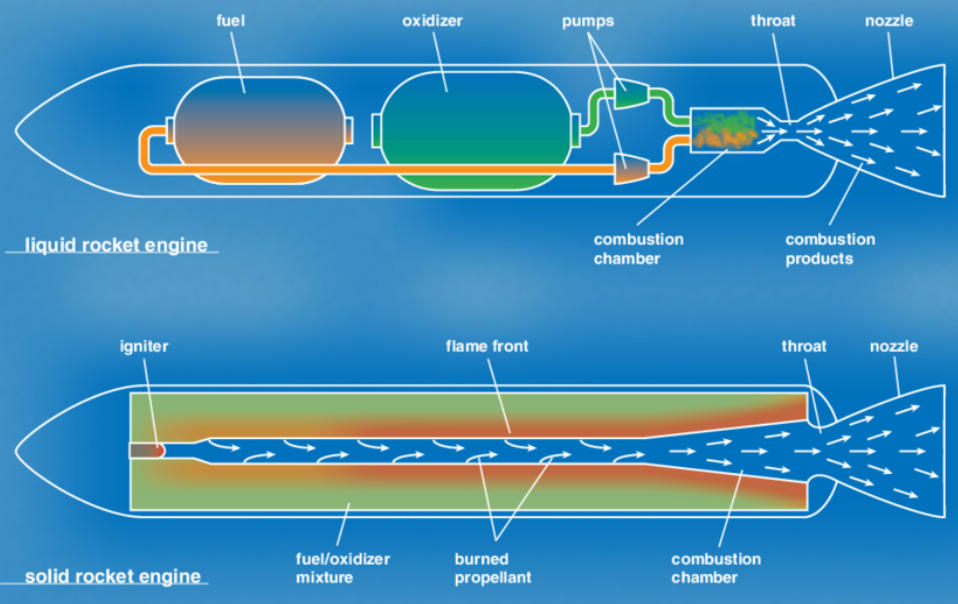Spacecraft and Rockets
- Krish Pesswani
- Jan 22
- 4 min read
Updated: Apr 5
Today on AeroIntellect, we will embark on an exciting journey beyond Earth, diving into the marvels of engineering designs: spacecraft and rockets. Have you ever wondered how these spacecraft and launch vehicles defy gravity, or survive the extremes of outer space? Let's dive into their design, purpose, and intriguing propulsion systems.
To begin with, what is the difference between a spacecraft and a rocket? A spacecraft is a vehicle that flies in space carrying astronauts, cargo, or instruments; an example of a spacecraft could be the ISS (International Space Station) and Apollo 11, which landed on the Moon in 1969. In short, a spacecraft is designed to perform tasks after reaching space, whether for exploration, science, communication, or transportation. A rocket, also known as a launch vehicle, carries a spacecraft from the Earth's surface to space and delivers payloads to specific orbits. For example, Saturn V launched Apollo missions to the Moon.
However, some vehicles function as both a spacecraft and a rocket, such as the SpaceX Starship. The Starship's upper stage is designed to operate in space and carry out space missions, while the super-heavy booster at the bottom of the vehicle acts as a rocket component and generates the thrust needed to launch the spacecraft into orbit.
Spacecrafts
Spacecrafts vary in design and purpose but share components, including propulsion, communication, scientific instruments, etc. The different types of spacecraft are:

• Crewed Spacecraft: Carries astronauts (e.g: SpaceX Dragon and Apollo Command Module).
• Uncrewed Spacecraft: Operate autonomously for research or support (e.g: Voyager and Hubble).
• Satellites: Orbit planets for communication, navigation, or observation (e.g: GPS satellites and Starlink).
• Rovers and Landers: Explore planetary surfaces (e.g: Perseverance and InSight).
• Space Probes: Travel to distant celestial objects (e.g: New Horizons and Juno).
Rockets
As previously mentioned, Rockets are vehicles that launch spacecraft into space, overcoming Earth's gravity using robust propulsion systems. Types of rockets:
• Expendable Rockets: Used once (e.g: Saturn V and Atlas V).
• Reusable Rockets: Designed for multiple uses (e.g: Falcon 9 and SpaceX Starship).
• Heavy-Lift Rockets: Capable of carrying massive payloads (e.g: Falcon Heavy and SLS).
• Suborbital Rockets: Reach space but do not complete an orbit (e.g: New Shepard).

Once a spacecraft is launched, you may have noticed that it doesn't maintain a straight trajectory all the way up. It lifts off perfectly vertically, but at around the one-minute mark of the flight, it starts turning and going laterally, known as the Gravity Turn. This is a trajectory optimization technique that is always employed while launching rockets for two beneficial reasons: It uses gravity to steer the vehicle onto its desired trajectory, saving rocket fuel, and it helps to minimize aerodynamic stress on the launch vehicle. The rocket can move laterally because of the exhaust nozzles, which can be swiveled from side to side, altering the direction of the thrust.

The accompanying image shows the popular Space Shuttle, another example of a rocket and a spacecraft, launched in 1990 to deploy the Hubble Space Telescope. As you can see, the spacecraft was launched with two solid rocket boosters (SRBs) and an external tank. These parts are sequentially separated at predefined intervals once the fuel has run out from them. Once the rockets and external tanks are blasted off, they land in the ocean, where they can be retreated from. Later, the spacecraft maneuvers independently, using its main engine.
Propulsion System
Like turbine engines on aircraft, rocket propulsion also relies on the fundamental principle of Newton's third law – for every action, there is an opposite and equal reaction. There are two types of rocket propulsion systems used: Liquid Fuel Engines and Solid Fuel Engines. The purpose of this propulsion system is to convert chemical energy to kinetic energy.

Liquid fuel engines use liquid propellants stored in separate tanks, one for the fuel and another for the oxidizer. The fuel and oxidizer are pumped into the combustion chamber, where they mix and ignite, creating high-pressure and high-velocity gases that are expelled through a nozzle to produce thrust. The most common liquid propellant combinations are liquid oxygen (LOX) as the oxidizer and liquid hydrogen (LH2) as the fuel. This combination is highly efficient and is used in significant space programs. Examples of other combinations include oxygen and RP-1(a highly refined kerosene), used in the Saturn V rocket.
Advantages of liquid fuel engines include their throttling (controlled for varying thrust) and restarting ability, making them flexible for missions that require precision, such as placing satellites into different orbits. Furthermore, liquid fuel engines are capable of producing more thrust per unit of propellant as they offer greater control and optimization of the combustion process.
However, the liquid fuel engine is considered highly complex as it requires sophisticated pumps, cooling systems, valves, and many other things. Storing and handling liquid propellants can also be complicated and dangerous due to the risk of leaks, freezing, or explosion.
Solid fuel engines use propellants that are stored in a solid state within the rocket itself. The fuel and oxidizer are mixed together in a solid form called the propellant grain, which is shaped to burn in a controlled manner. Once ignited, the entire propellant burns until all fuel is consumed, generating thrust continuously. One of the most widely used solid propellants is a mixture of ammonium perchlorate (oxidizer) and powdered aluminum (fuel) bound together in a rubbery substance called hydroxyl-terminated polybutadiene (HTPB). As mentioned, these engines are ubiquitous in booster stages (during launch) to provide initial thrust, such as SRBs used on space shuttles.
The few advantages of solid fuel engines are that they are straightforward and reliable, as they have no moving parts. It can also be stored for a long time and is ready to ignite immediately.
The cons of having this engine in a spacecraft is the inability to throttle or restart. This means that once ignited, it will burn until all the fuel is consumed, limiting their flexibility for missions. Also, as previously mentioned, solid-fuel engines have a lower rate of producing thrust, making them less efficient.
Thanks for launching into the world of spacecraft and rockets with me! Join me next week as we venture into another exciting chapter of aerospace innovation—there's always more to explore beyond the horizon.




Comments